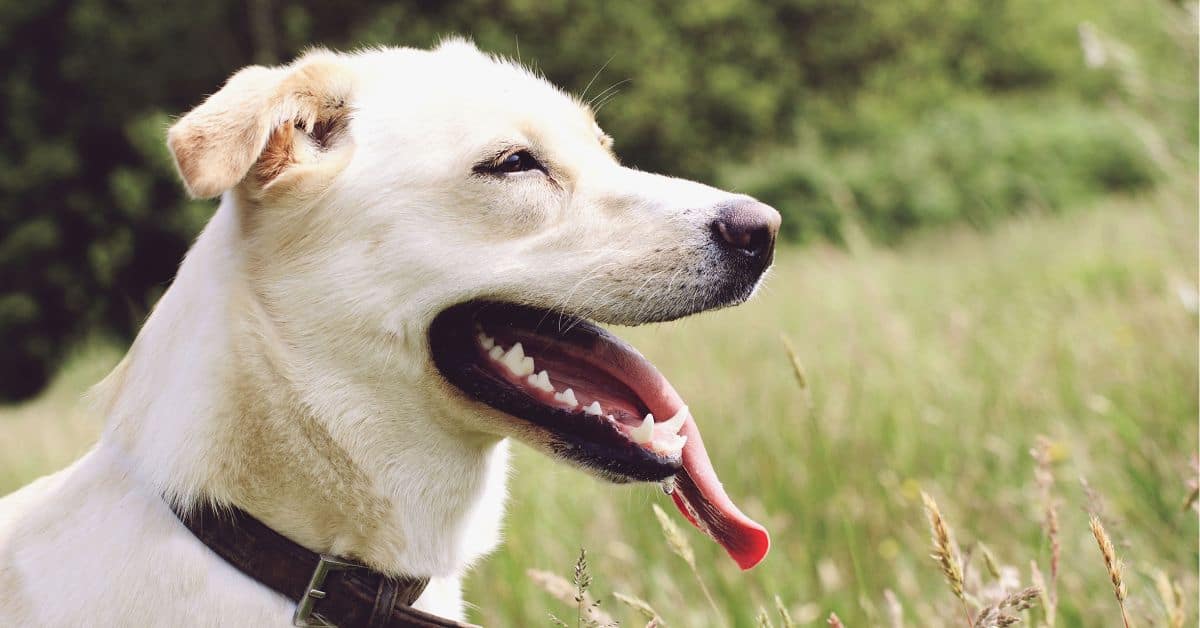If you’re a dog owner, you know that sometimes our furry friends can get a little bit…anxious.
It’s normal – after all, they don’t know what’s happening around them half the time.
But when their anxiety manifests in heavy breathing and dog hyperventilating, it can worry us, humans.
Luckily, there are some things we can do to help calm our dogs and help them breathe more easily if dogs pant heavily.
This article will share some tips on how to calm a dog’s breathing as pet parents.
So if your dog is struggling to catch their breath, read on!
How To Calm A Dog’s Breathing – 7 Ways
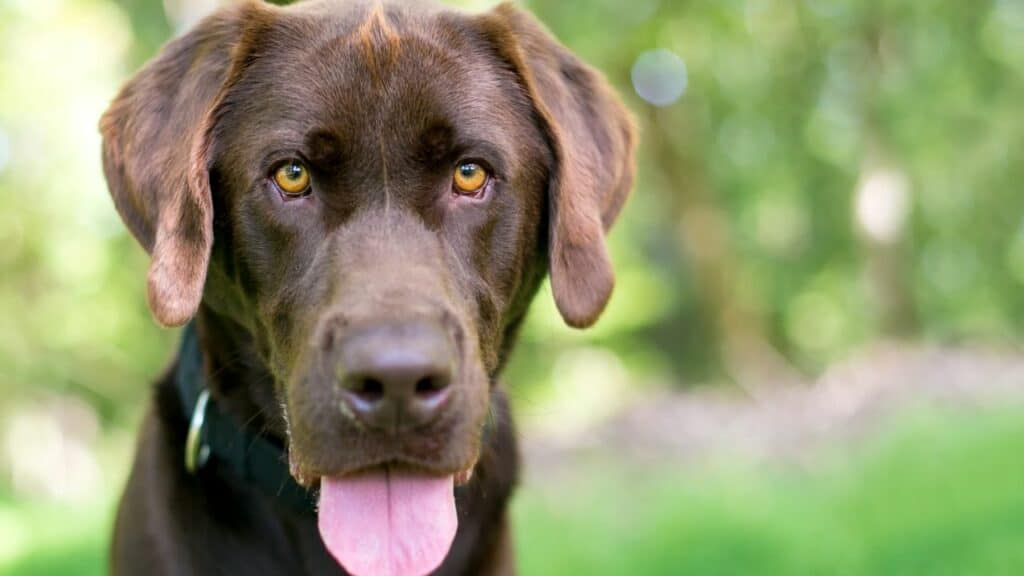
You can do several things yourself to help your dog breathe naturally if you see him breathing heavily.
But before we go deeper into those ways, it’s important to remember that you need to seek veterinary attention if you see your dog hyperventilating without any reason.
If a serious problem occurs and your dog is in trouble breathing, he needs veterinary medicine.
But if you “just” have an anxious dog, here are some things to try:
Basic Obedience Commands
Mastering basic obedience commands such as sit, stay, come, and down can help you build a strong bond with your dog.
When teaching these commands, it’s essential to approach them calmly and reward the desired behavior.
As always, focus on positive reinforcement and reward-based training methods.
You’ll want to use a calm and confident tone of voice when repeating the command and controlled breathing to signal that what you’re asking for is calm behavior.
Practicing consistency is also crucial: ensure every family member uses the exact command words and treats rewards accordingly to ensure your pup understands what’s expected of them.
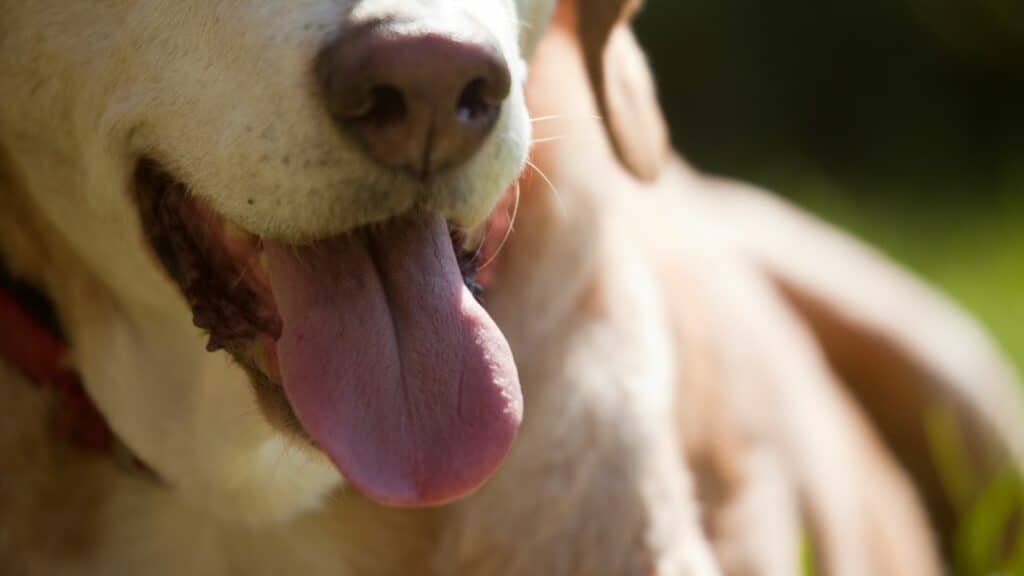
Allow Him To Rest His Chin
Place your right hand a few inches in front of your dog, just below his chin level, palm up and softly curved, and thumb pointing toward him.
Move your left hand across your right palm with rewards so your dog’s nose follows the treats and his chin ends up over your right hand—though he may not yet be touching your right palm.
As his chin goes over your palm, say “yes” and give him a treat.
Bring your left hand lower over time, so your dog presses his chin onto your right palm, then say “yes” and provide the pleasure.
Gradually increase the time your dog must hold his chin before you say “yes” and give him the goodie. In 1/4- to 1/2-second increments, increase the time.
Offer your hand without showing him rewards when he can comfortably hold his chin in place for 2-3 seconds, take a deep breath when he places his chin, then say “yes” and treat.
If your dog is familiar with the breathing exercise, he should also take a deep breath.
Create Training With Food
Get your dog used to being in a crate or confined space by feeding them meals in there or giving them treats.
Many dog owners rely on crates or other confined spaces to keep their pup safe and secure, but it’s essential to ensure your pup is comfortable with the crate environment before relying on it.
An easy way to get your dog used to be in a crate is through positive reinforcement.
Making sure your pup has plenty of association of the box with good experiences, such as feeding them meals inside or regularly giving treats in there, will start to create an environment where they not only associate the space positively but also look forward to being inside.
With enough time and rewarding these positive habits, the future use of a crate – whether for their trip overseas or bedtime – becomes a lot easier!
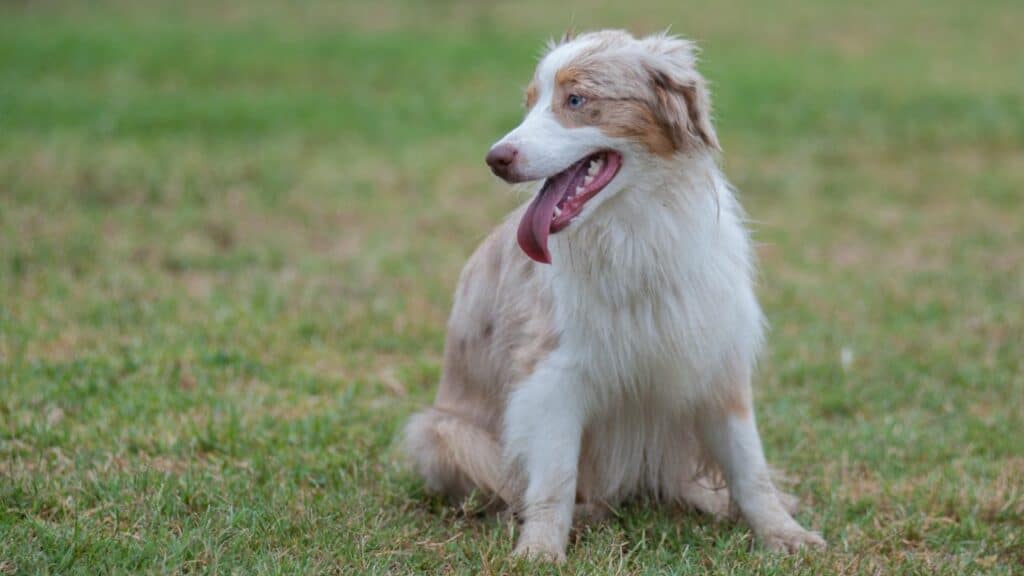
Take A Walk
Taking your dog on regular walks is one of the best things you can do as a pet owner!
Going on short, frequent walks around the block or to the park nearby is an excellent exercise for your canine companion – it’s a chance for them to burn off some energy, explore new smells, and stay active.
It’s also an excellent opportunity for bonding: with simple body language, quality attention, and positive reinforcement during their walks; your pup will learn quickly and strengthen the human-animal bond you share.
A few hours of light exercise can help keep your dog fit while giving them a low-key activity they’ll look forward to each day.
So get outside and give both of you something to enjoy!
Let Him Outside
If you have a backyard, let your dog spend time outside exploring and playing.
Allowing your pup to spend some time in the backyard will enable them to explore and play without being leashed.
Most dogs thrive on having the freedom to move and investigate their surroundings.
It helps to scavenge, search and hunt instincts, plus it is an excellent workout!
Before letting your puppy outside for their adventure, ensure their continued presence is supervised so they don’t stray too far away and get into trouble.
All in all, you can be sure that when it’s just your furry friend alone outside taking in all of the smells and experiences of a big world available to them, your dog will thank you for days with some happy cuddles!
Distraction
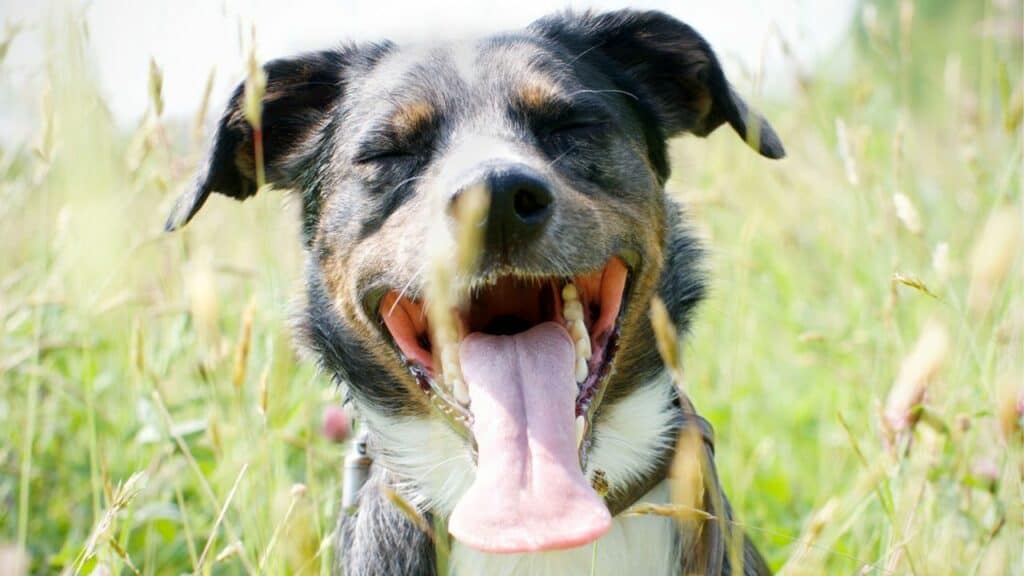
Be sure to give your dog plenty of toys and chew bones to keep them occupied and distracted from their anxiety.
Toys and chew bones are a great way to keep your pup calm and distracted from their anxiety.
Show your furry friend that it’s ok to relax by breathing with them – when they take a calm, deep breath through their nose, you repeat until you both feel relaxed.
Increase the number of toys around the house for your dog to explore and play with as needed.
Giving your pup something to occupy their mind can help calm any nervousness and insecurity associated with anxiety.
Try Using Calming Scents Like Lavender Or Chamomile
Incorporating calming scents like lavender and chamomile into your home can benefit your dog and dog hyperventilation.
When diffused near where your pup likes to spend most of its time indoors, these scents can help promote calm breathing and relaxation.
Studies have also found that they can help build a sense of calmness in the environment and reduce overall stress levels.
If your pup has been under added stressful situations, calming scents could work to soothe their nerves!
It is an easy way to make sure that both you and your furry friend feel calm while spending more time at home.
Causes Of Fast Breathing In Dogs
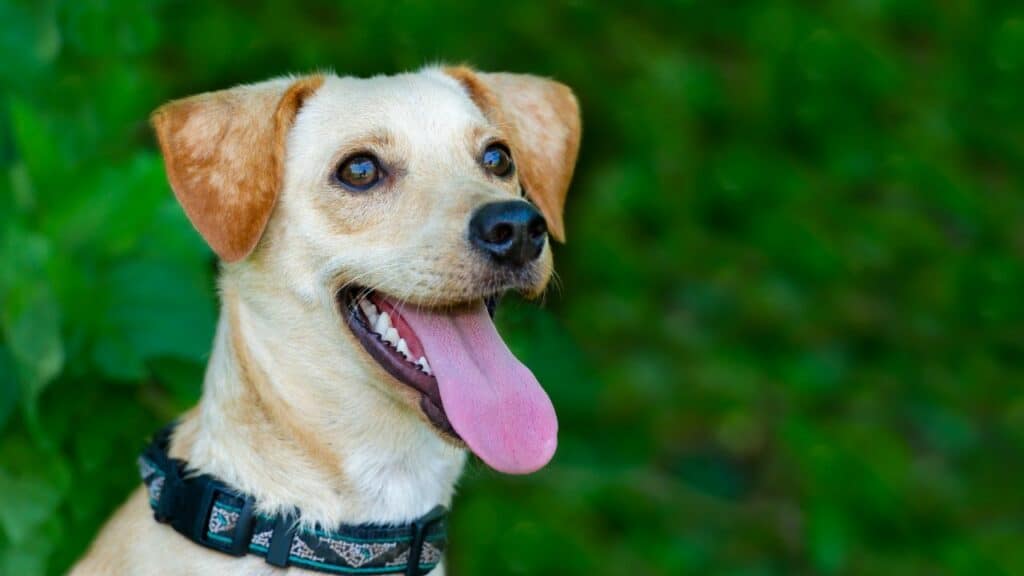
A healthy dog’s resting respiratory rate should be 40 or fewer breaths per minute and not be strained or difficult.
For various reasons, dogs can breathe quicker than 40 breaths per minute; they have breathing problems.
Some are more developed than others. If you see your dog hyperventilating, that can be for any of the reasons listed:
Sneezing In Reverse
That is the breathing linked with the traditional honking sound.
It is not usually an emergency and is more common in tiny breed dogs like Shih Tzus, Yorkshire terriers, and pugs.
Although it may appear alarming, reverse sneezing is usually brief and is caused by inhaling an allergen or being enthused about something.
Excitement, Recreation, And Physical Activity
Active dogs may breathe more quickly to get more oxygen into their lungs and better oxygenate their muscles while playing.
That is why people live heavily and rapidly when they exercise.
Pain
When dogs are in pain, it is not always obvious.
They may not scream or cry in the same way that humans do.
Although pain from an eye condition, such as a cut or corneal ulcer, can cause a discharge that appears to be tears). Panting is a subtle indicator of pain in dogs.
Anxiety And Stress
Panting can sometimes indicate that your dog is agitated.
However, not all dogs who pant are anxious.
Therefore, the dog’s entire body language must be evaluated to establish whether they are panting due to stress or anything else.
One of the most common anxieties in dogs is separation anxiety which makes a dog breathe fast.
Other indicators of worry and stress in a dog include lip licking, avoiding their attention from whatever is giving them discomfort (such as a veterinarian or vet tech), being hyper-aware of their surroundings, and whale eye—when only a sliver of the white of their eyes can be seen.
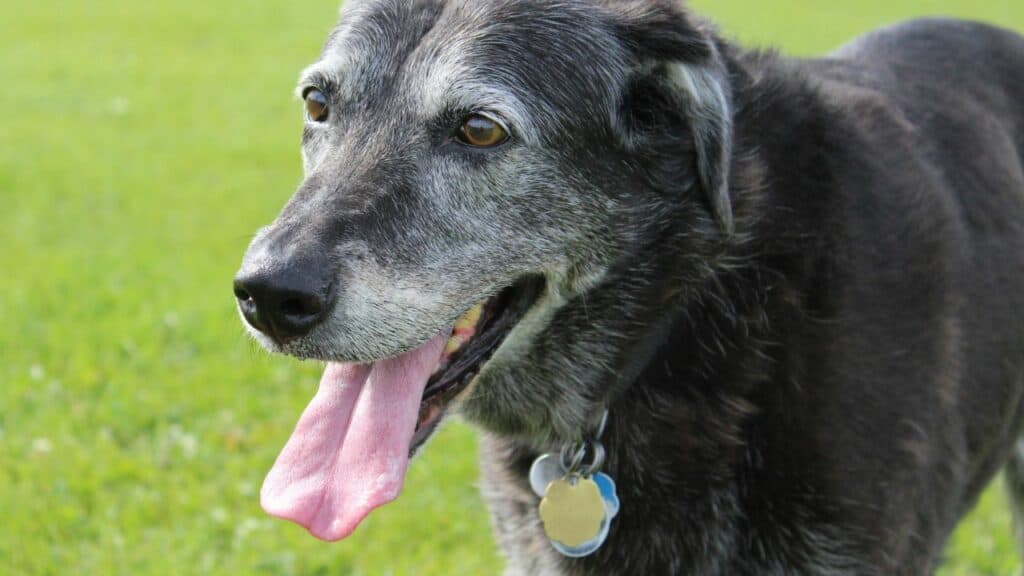
Heat Illness
Dogs pant to control dog’s body temperature, so if they have a fever, they will pant to cool themselves.
Heat-susceptible dogs, such as English bulldogs (and some other dog breeds), will begin to pant heavily to cool themselves if they become hyperthermic.
Also, if your dog has a kennel cough, he might breathe.
Tracheal Insufficiency
Certain little breed dogs, including chihuahuas, Yorkshire terriers, and toy poodles, are prone to tracheal collapse.
The trachea, or airway, narrows to an impossibly small diameter in this illness.
That can reduce the dog’s ability to inspire air and increase respiratory exertion.
Paralysis Of The Larynx
Labrador retrievers are predisposed to this condition.
One cartilage flap that covers and protects the trachea during eating and swallowing no longer retracts and instead remains covering the tracheal entry.
That might result in a honking sound during breathing as well as faster breathing.
Heart Attack
Heart failure in dogs can cause a fast respiratory rate and increased respiratory distress.
When a dog has heart failure, its heart cannot efficiently pump blood to the lungs and body.
When this happens, blood might become blocked up in the lungs’ arteries.
That can pressure the lungs, preventing them from fully inflating, and a dog will breathe faster to compensate.
Airway Brachycephalic Syndrome
As the name implies, brachycephalic airway syndrome (BOAS) is a collection of abnormalities in a dog’s airway.
As the name implies, this affects brachycephalic canines such as French bulldogs, pugs, and other dogs with pushed-in faces.
This can manifest as nares stenosis, everted laryngeal saccules, an expanded soft palate, and other anatomical deformities
These variables can predispose a dog to respiratory issues, but dogs with BOAS are predisposed to fast and heavy breathing due to their morphology.
Acidosis Metabolic
That occurs when a dog’s body cannot maintain a normal pH, usually caused by kidney illness or diabetic ketoacidosis.
They begin to pant more as their pH decreases. They are expanding carbon dioxide, one way the body can elevate its pH.
If you’re feeling overwhelmed by your dog’s anxiety, don’t worry – there are plenty of things you can do to help them feel more comfortable and calm.
Start with basic obedience commands such as sit, stay, come, and down.
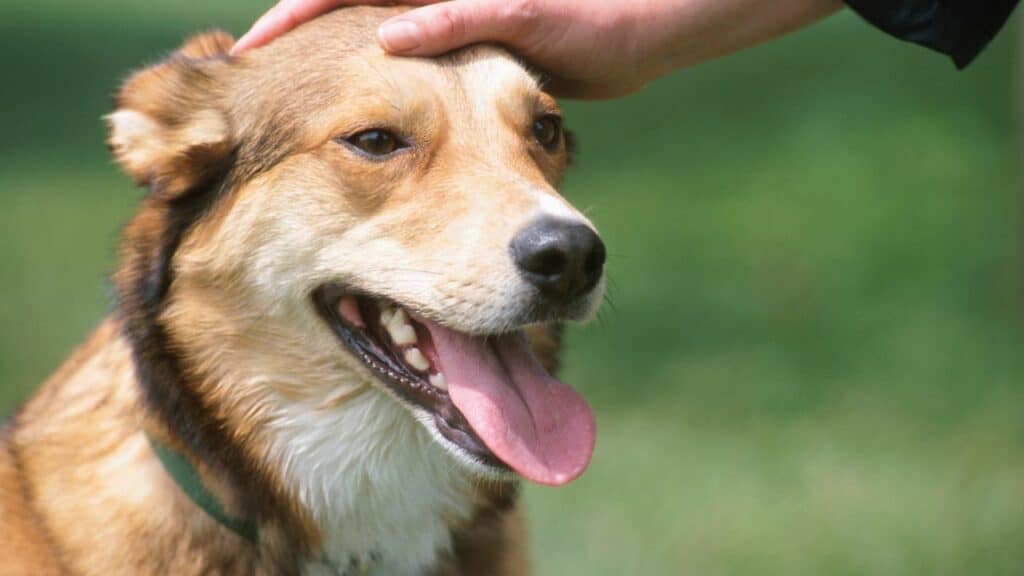
Get your dog used to being in a crate or confined space by feeding them meals or treats.
Take your dog on short walks around the block or nearby park.
Let your dog spend some time outside exploring and playing if you have a backyard.
Be sure to give your dog plenty of toys and chew bones to keep them occupied and distracted from their anxiety.
Finally, try using calming scents like lavender or chamomile in a diffuser near where your dog likes to spend most of its time indoors.
With patience and consistency, you should see an improvement in your furry friend’s behavior and quality of life.
Before You Go…
Now you know how to calm a dogs breathing
If you want to learn more, read the following articles too!

